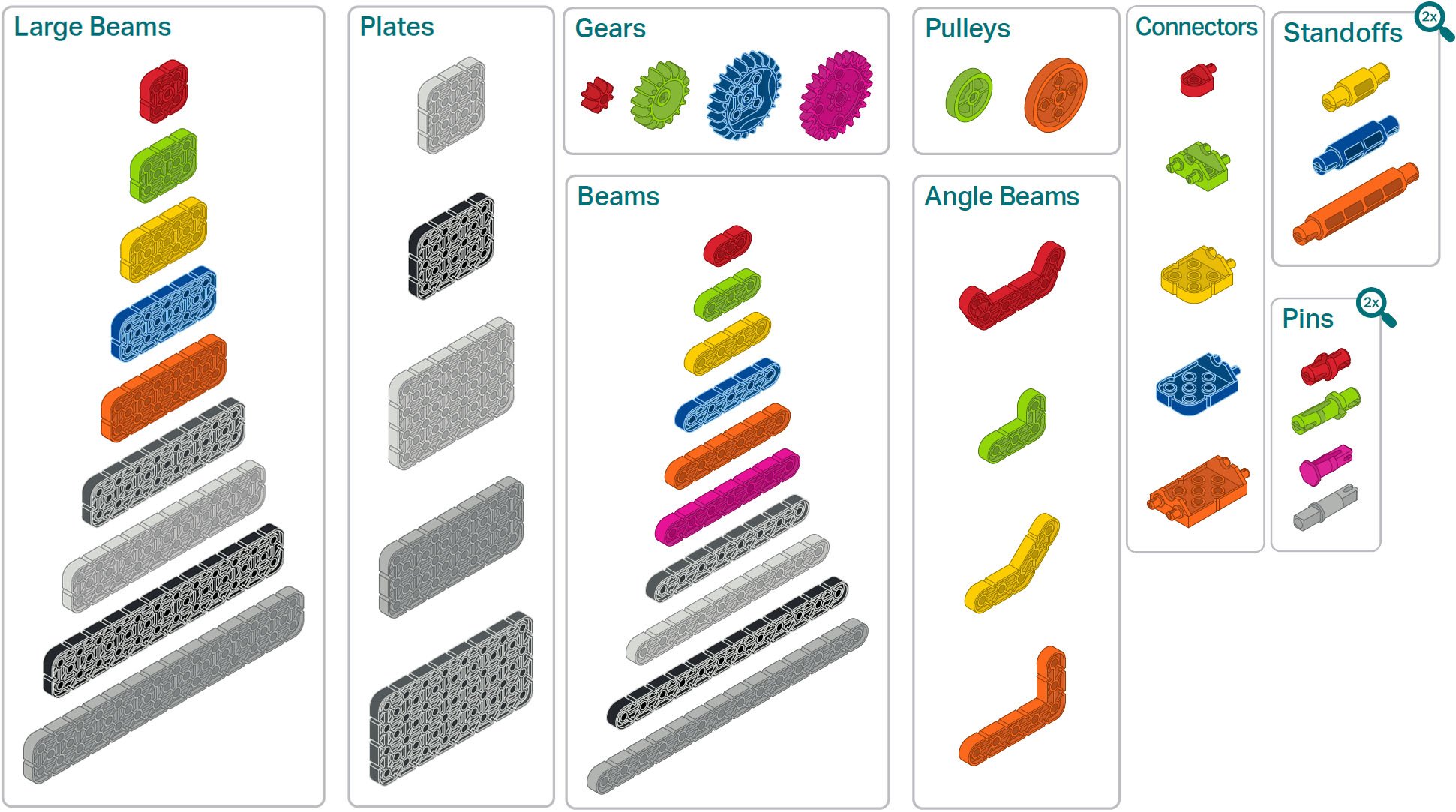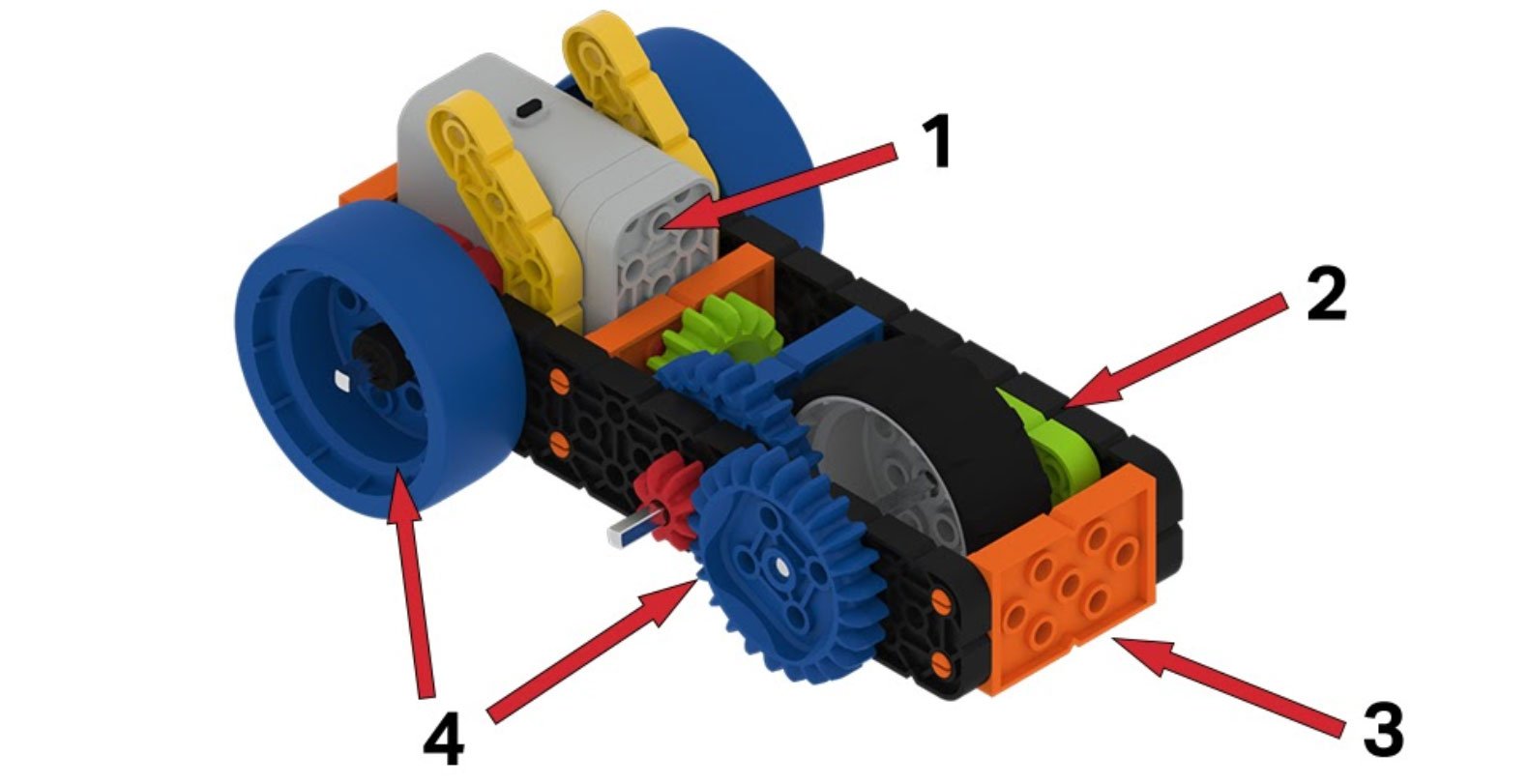Play
Part 1 - Step by Step
- InstructInstruct students that they are going to study 9 different categories of VEX GO pieces, to see how they might be used to build robots and other structures.
VEX GO Pieces Categories: large beams, plates, gears, beams, pulleys, angle beams, connectors, standoffs, and pins

- ModelModel for students how to choose 9 different pieces- one from each category, and do a quick draw of each.
- They should label each piece with its proper name.
- Model for students how to use a Blueprint Worksheet to help organize their work.
Blueprint Worksheet Filled Out - FacilitateFacilitate students' thoughtful study the physical features of the parts for their drawings using spatial language.
Ask questions to prompt a discussion, such as:
-
Why do you think some pieces are longer than others?
-
Why do you think there are different angles for the angle beams?
-
- RemindRemind students that asking questions is a part of learning.
Add a Questions Board somewhere in the classroom. If students are unable to answer a question in the moment, encourage them to use this space to keep track of questions to ask at the Mid-Play Break.
- AskAsk students what they might be able to build with these pieces.
Mid-Play Break & Group Discussion
As soon as every group has finished their drawings, come together for a brief conversation.
- Students share drawings.
- Ask students to identify key physical features of the parts using spatial language.
- Is this piece larger or smaller than that piece?
- How many holes are in that piece?
- What shape does that piece look like? (Circle, rectangle, square)
Part 2 - Step by Step
- InstructInstruct each student to choose one piece from one of the four categories listed and study it in detail. Show them the GO Parts Poster, and have them orient the piece in their hand the same way it is oriented in the poster in order to develop spatial awareness. They will complete a detailed observational drawing of this part on a new Blueprint Worksheet. Their diagram should be labelled with the part name and function.
Introduce the 4 main functions of VEX GO pieces in a build: fasteners, structural pieces, motion pieces, electronics. This table can also be found in the Lab 1 Slideshow.
How Parts Function in a Build
VEX GO Parts Electronics Structural Components Fasteners Motion Components Provide life and intelligence to your robot. Building blocks of your robot. Used to connect the structural components. Provide motion and additional capabilities to your robot. - Robot Brain
- Battery
- Motors
- Sensors
- Beams
- Plates
- Pins
- Standoffs
- Connectors
- Wheels
- Gears
- Pulleys
- ModelModel how the pieces function in these capacities with pre-made pieces, photos, or the illustration below (also see Lab 1 Image Slideshow).

- FacilitateFacilitate a discussion with students about the four main functions of VEX GO pieces in a build: fasteners, structural pieces, motion pieces, electronics by asking the following questions:
- Why do you think the pieces in the VEX GO Kit are organized this way?
- How do you think each category could be used in a build?
- RemindRemind students to add as much detail to their drawings as they can. Remind students to try and orient the pieces in a similar way to the GO Parts Poster.
- AskAsk students how they think these pieces would work together with one another.